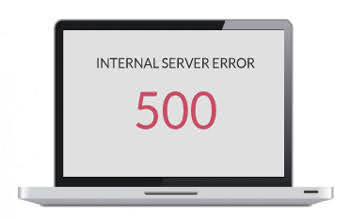Digital Optimization, Performance Optimization
Application Performance Management strategy: common mistakes you don’t want to make
- By Luca Forni
26 May

Are your web store applications performing well enough?
You will probably answer this question with a sound “yes!”, probably you don’t see any issues now, but there are some critical periods during the year (Black Friday, Cyber Monday, or Holiday Season) when website traffic will increase even 3x. Are you prepared for these kinds of peaks?
Poor applications performance will affect your revenues.
We can provide you with a best in class approach to Application Performance Management (APM), so you don’t have to worry about it.
First of all, we need a definition of APM.
Let’s start with the Gartner definition, covering five areas of “in production monitoring”.
Application Performance Management:
- end-user experience monitoring (EUM)
- runtime application architecture discovery modeling and display
- user-defined transaction profiling
- component deep-dive monitoring in the application context
- analytics capabilities
With this definition on one hand and our 15 years of experience in IT performance management projects (from performance testing to capacity planning) on the other, we can summarise the most frequent mistakes as follow.

Technology silo approach
Each team works as a silo using its owns tools, avoiding collaboration, knowledge sharing and tools streamlining. This often leads to monitoring agents proliferation resulting in an overhead on the systems and in a longer mean time to repair (MTTR). When an issue occurs, every team starts its own analysis on its own tools and data: the same data is often collected & analysed multiple times because the same metric could be named and or collected in a different way by each tool or team.
Heterogeneity of tools across environments (from dev to prod)
When an incident occurs in production (service outage or performance degradation), it is really difficult or even impossible to correlate the issue in the previous environments.
Default installation
Application Performance Management tools are usually sold as “easy-to-implement/auto-tuning” software. We strongly suggest avoiding default installation because tuning is the cornerstone of a golden configuration set.
Lack of a monitoring strategy
APM tools require a continuous improvement process that could be very expensive if underestimated during the monitoring planning phase and could lead to a high churn rate in tools usage.
Blindly adopt software suites
Application Performance Management tools sometimes come for free with other IT management software or in monitoring suite deals, but spending time in selecting the right APM tools that answer your needs could save a lot of money and maintenance effort to reach tools effectiveness.
Partial production coverage
Install agents on few servers to save licensing costs or install only when an issue occurs, hides you the entire picture and prevents the benchmarking between normal service behaviour and anomalies.
Single-purpose
APM is mostly related to “incident management” process, but APM data is the input for Capacity Management, SLM, Security and other IT Management processes, so the entire data gathered should be considered
Misuse of web/marketing analytics software
These are often confused with Application Performance Management tools, forcing a tool to do the wrong job. User experience from a service and performance point of view is different from usability and user behaviour on service usage.
Looking forward
Do not stop innovating and limiting your scope to “Application”: redefine your monitoring strategy as Digital Performance Management, address Cloud, IoT and Microservices initiatives, automate your operations, leverage Artificial Intelligence and Algorithmic IT Operations capabilities, be prepared to support DevOps and continuous delivery processes.
If your APM strategy incurs these mistakes, then we can help.
Categories
- Akamas
- Analytics
- Announcements
- Arduino
- Big Data
- Capacity Management
- Cleafy
- Cloud
- Conferences
- ContentWise
- Corporate
- Cybersecurity
- Data Science
- Digital Optimization
- Digital Performance Management
- Fashion
- IoT
- IT Governance and Strategy
- IT Operations Management
- Life at Moviri
- Machine Learning
- Moviri
- News
- Operational Intelligence
- Partners
- Performance Engineering
- Performance Optimization
- Tech Tips
- Virtualization
Stay up to date

© 2022 Moviri S.p.A.
Via Schiaffino 11
20158 Milano, Italy
P. IVA IT13187610152